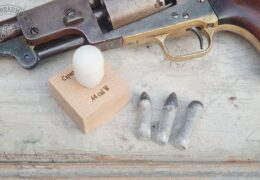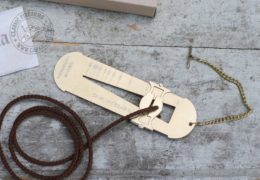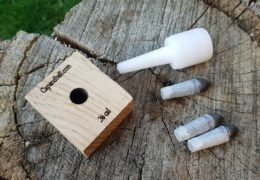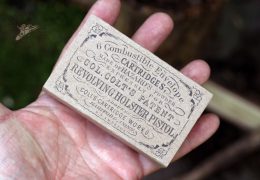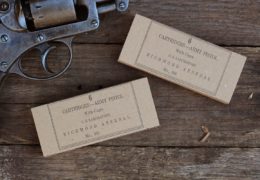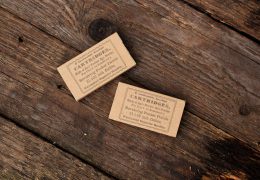J. P. Sauer & Sohn 19th century single shot rifle in action

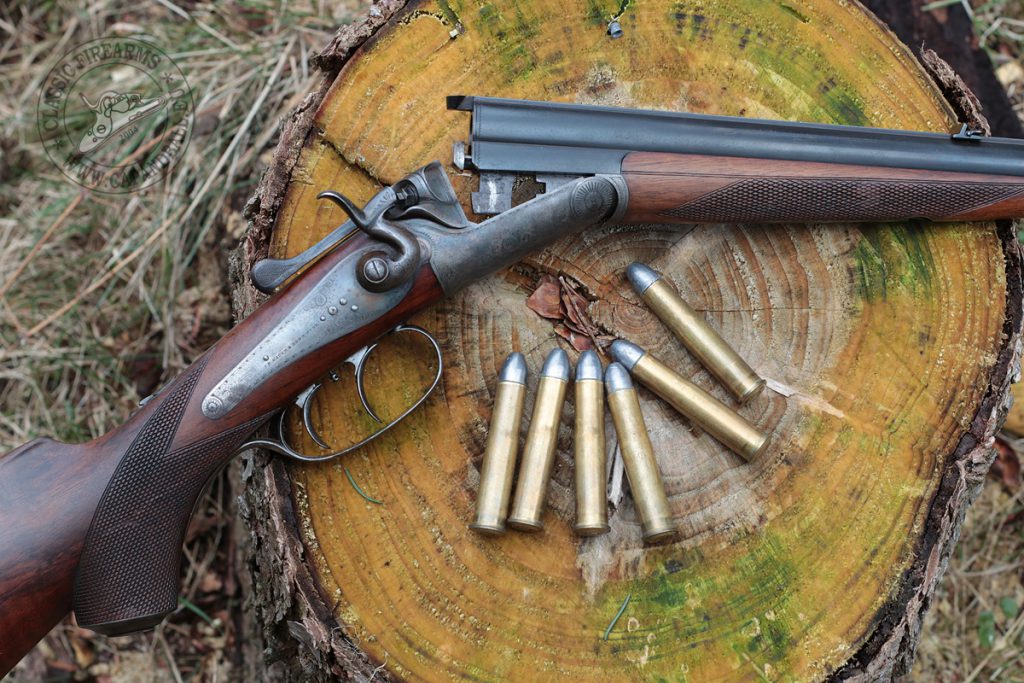 Life is never easy. Well I do not agree with this. Sitting in the middle of a beautiful field up in the mountains of Pilis close to Budapest, bathing in the warm sunlight of May, staring at the white clouds and thinking about absolutely nothing is more than easy. Delightfully easy I would say. I know this place. I grew up close to here. This is the place where my grandpa took me for Sunday excursions and this is the place where I first took my son to hunt and we shot our first game together. Love of nature passed from generation to generation in my family and I do everything to pass these values to my kids.
Life is never easy. Well I do not agree with this. Sitting in the middle of a beautiful field up in the mountains of Pilis close to Budapest, bathing in the warm sunlight of May, staring at the white clouds and thinking about absolutely nothing is more than easy. Delightfully easy I would say. I know this place. I grew up close to here. This is the place where my grandpa took me for Sunday excursions and this is the place where I first took my son to hunt and we shot our first game together. Love of nature passed from generation to generation in my family and I do everything to pass these values to my kids.
Surely the right place and right time to leave the noise of the buzzing city behind. The last task is to choose the right way and right companion to hunt. It cannot be anything but stalking, and the rifle cannot be anything than the nearly 130 years old J. P. Sauer & Sohn single shot stalking rifle I found half year ago. That rifle has a story. It was found thirty years ago in under the roof of an old building. Who knows who hid it there? Was it after the First or Second World War? It is a sad story indeed as the owner never returned. The rifle was handed to the police, and later an old doctor bought it, and used it for another 25 years. Luckily he never modified the rifle: he did not add a scope, did not replace any of the original parts so the rifle kept its historical value that I am very grateful for.
11 mm Mauser, 11.15x60R Mauser, 11x60R Mauser, .43 Mauser, a noble vintage calibre. No matter how you call it, it will be still be the same: the first center fire metallic cartridge of the German Empire, originally designed for the Model 1871 bolt action single shot rifles, the first ever military Mauser rifle. It was not easy to solve the ammo question. My rifle was made in February 1892, last days of the black powder era and according to the metal stamps on the breech of the barrel its original load was 4.75 g of black powder and a 21 g pure lead conical bullet. Finding and casting the right bullet, finding the proper alloy and lubrication, developing the accurate black powder load are a time consuming but enjoyable part of such project. It takes more than just buying and assembling the components as the reloader must understand the very secrets of the rifle. My “Birschbüchse” has special rifling developed by the famous Scottish gun maker, Sir Alexander Henry in the middle of the 19th century. The Henry rifling had seven grooves and seven flat plane surfaces but at the intersection of each angle, angular projections were added creating fourteen bearing surfaces to properly grab the soft lead bullet. Finding the right projectile and black powder load was much easier than acquiring the proper cartridge cases for such vintage patron. As they were not available at my preferred suppliers I decided to reform 45/90 cases to 11 mm Mauser – an excellent project itself, all adding to the joy of hunting a lot.
According to the original J. P. Sauer & Sohn catalogue of 1903 these rifles were made in two versions. The customer had to pay 100 Marks for the standard and 150 Marks for the premium grade. The later had selected walnut stock, chequered pistol grip, cast steel round barrel, folding peep sight installed into the tang and casing for five cartridges installed into the stock. Both versions could be ordered in 8-11 mm ordinary calibres and for an extra 25 Marks in express calibres for African big game hunting like .450, .500 and .577. All versions were manufactured with “Top-Radial Verschluss” closing the breech safely in three positions.
I was still sitting on my favorite log under God’s great sky staring into the distance wishing this moment to last forever when something from the right interrupted me. I had been walking these hills since the winter passed to properly learn the roe buck population of the area and I knew that we had an old buck here. He is the kind of old, nervous buck that is hard to surprise, senses and spots the hunter well before he can take an aim. I took my time to evaluate the antlers through my well proven 8×30 binoculars. I just love these small beauties. They are perfect for stalking: light enough, fit in my pocket and still offer an excellent picture quality. It is not easy to judge the age of the roe buck just by the shape and size of the antlers in forest areas so I usually check the angle of the coronet: if the coronets lean outside the age is surely above middle age.

Each and every single encounter we had before ended up with alerting the whole forest with loud barking. But not this time. That day I was the one who arrived first to the great final scene of the play. He was walking gently on my right feeding on the early vibrant green leaves of the bushes. The 130 meter distance was not large for a modern scoped hunting rifle, but definitely too much for shooting with open sights. The limit here is not the accuracy or killing power of the bullet but the sight picture: for proper open sight alignment and placement the game must be at less than 100 meter distance. That’s where the game started. I crawled from bushes to bushes, freezing when he raised his head, and moving when he concentrated on eating. It took nearly 20 minutes to close the distance to not more than 30 meters. I was hiding behind the last line of bushes when he spotted me. Although my wind was just perfect, a cracking branch under my foot revealed my plan. I raised the rifle as slowly as possible while the buck was still staring at me. Half of his body was still behind the bush. I tried to aim at the spot where I thought the heart to be. The deep roar of the rifle ended the quiet moment. The dense white smoke prevented me from seeing the buck’s reaction, all I saw was the game running into the forest not more than 30-40 meters away, and heard the cracking of branches under the collapsing body. Not a bad sign after all. After waiting ten minutes that seemed endless I walked to the spot where he stood. A great amount of pinkish red, foamy blood marked a hit on the lounges. A bit behind than the shot placement I was after, but the heavy lead bullet still did the job perfectly well. Following the strong blood trail I found him in a few minutes, only fifty meters from the place of the shot.
Not easy to express the feelings one has in such controversial moment. The joy of success and feeling sorry for the fallen game mix tears with smiles. According to the wear on the teeth the age of the buck was somewhere between seven and eight years. A legit kill it was.
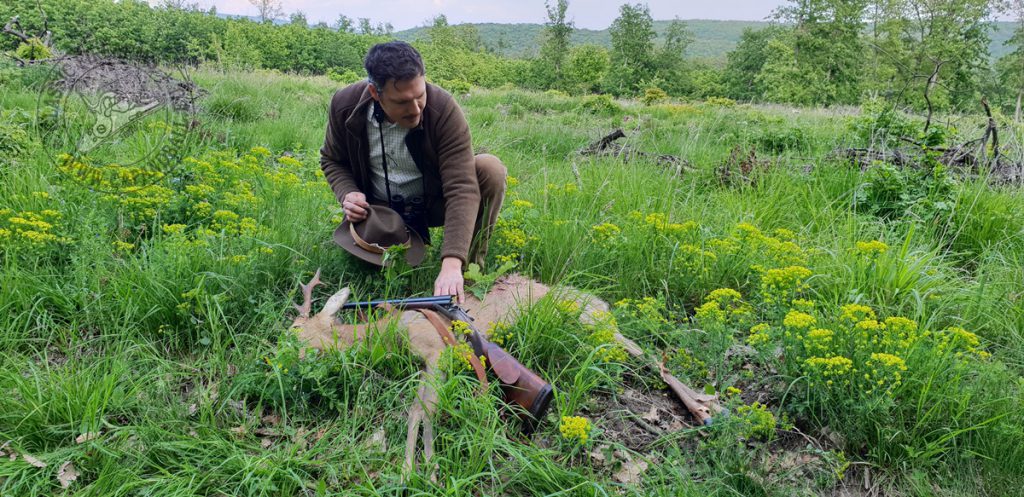
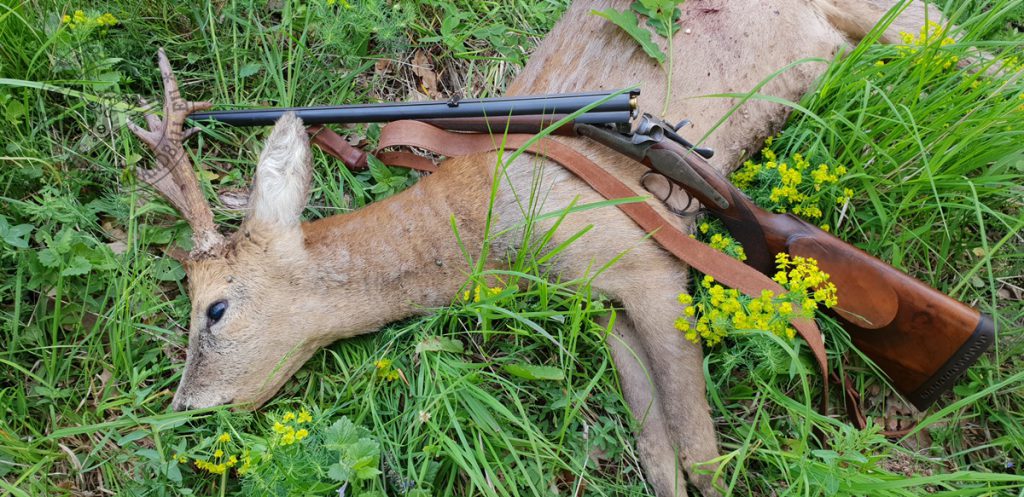
Although this hunt seemed not more than a few hours, in reality it was more than a half year continuous adventure spent parallel in the forests, hills and in my man cave at home working on the cartridge, researching the history of the rifle and the maker. This process invests a great value in hunting. Knowing more about the maker and the original user of the noble firearm brings you close to timeless cultural values, values that are still represented by the J. P. Sauer brand. Who could possibly wish for more to understand Sauer’s key brand statement: “Guns for generations”. I do completely understand it now, and I am proud to be a little part of that history.
Balázs Németh, 2019.


